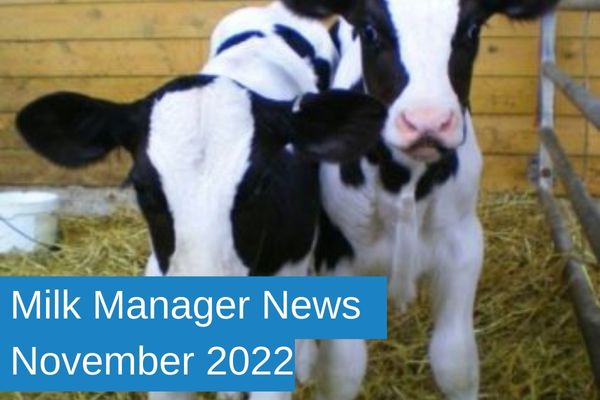Milk Manager News November 2022 – Thoracic Ultrasound Scanning in Calves
14 November 2022Bovine respiratory disease (BRD) is a very common and costly disease in dairy calves and early detection and treatment is vital to minimise the impact on growth and lifetime performance. The disease is multifactorial and causes damage to the respiratory tract and lungs. Infectious causes can be viral, bacterial, parasitic and fungal, and stress can also increase the risk of BRD. Stress factors include weaning, management practices (e.g., dehorning, regrouping) and variable weather affecting temperature and humidity.
There are several scoring systems based on clinical signs that are used to diagnose BRD. One method (developed by the University of California, Davis) allocates a certain number of points for each symptom and a score of 5 or more, indicates a BRD case:
- Cough (2 points)
- Eye discharge (2 points)
- Nasal discharge (4 points)
- High temperature ≥39.2°C (2 points)
- Abnormal breathing (2 points)
- Head tilt or ear droop (5 points)
From a practical perspective, with this system a rectal temperature only needs to be taken if the visual scores total 4, in which case an elevated temperature could exceed 5, resulting in a BRD diagnosis. There is also a similar system developed at the University of Wisconsin. Both systems have relatively similar detection rates for BRD in terms of sensitivity and specificity. For more information on the Wisconsin Calf Health Scoring System see: https://fyi.extension.wisc.edu/heifermgmt/files/2015/02/calf_health_scoring_chart.pdf
One novel approach to detect lung damage from BRD is thoracic ultrasound scanning (TUS). This entails using an ultrasound probe, the same as that used in pregnancy detection, on both sides of the calf to scan the lungs and assess whether there is damage. The procedure is non-invasive, quick and can give an assessment of lung condition within a couple of minutes.
BRD can often go undetected in the early stages and TUS can help detect subclinical disease or chronic lesions when there are no obvious visual signs. Calves with subclinical respiratory disease can go on to perform less well as older heifers, with reduced growth rates and poorer conception rates. Therefore, TUS can be used to help identify heifers not to breed from. One study reported that heifer calves with one or more areas of pulmonary consolidation (≥3cm in size) in the first eight weeks of life produced 525kg less milk at 305 days in their first lactation (Dunn et al, 2018).
Whilst it is not practical for every calf to be scanned by the vet, it would be useful to scan a subset of calves at various ages should there be an issue on farm. This can help identify when BRD is occurring and then consult with your vet about an appropriate course of action. It may also prove useful to repeat the exercise to assess the effects of any remedial action taken, such as effectiveness of treatment protocols and management changes such vaccination or improvements to ventilation in the calf shed.
lorna.macpherson@sac.co.uk; 07760 990901
Sign up to the FAS newsletter
Receive updates on news, events and publications from Scotland’s Farm Advisory Service

